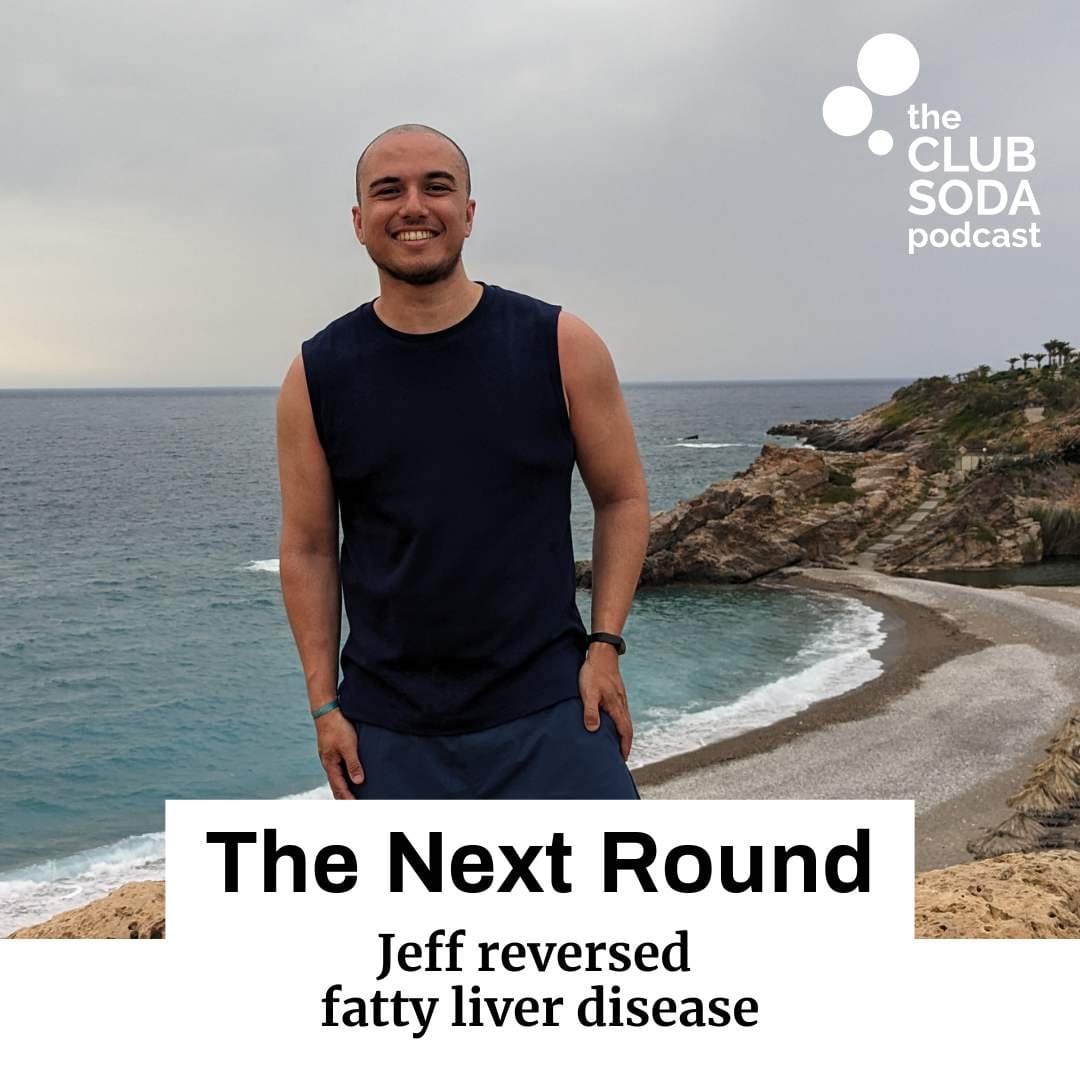
This website uses cookies to improve your experience. We'll assume you're ok with this, but you can opt-out if you wish. Read More
The Next Round: What happens after you change your drinking?


I feel like everyone talks about meditation or mindfulness like they talk about exercise. It’s good for you, it will make you feel better and everyone should do it. I have tried for years to meditate and also tried to be mindfully present with day to day activities, but it always just exhausted me and usually made me feel worse. I experience moments of calm. But mostly it brings up difficult and painful feelings, and at worst it triggers emotional flashbacks. What can I do about these difficult feelings? Jo

I’ve been writing about the benefits of mindfulness all this month in Club Soda, exploring what it means to be mindful about drinking, how mindfulness can help us with triggers for drinking, and how mindfulness meditation can help us change. But you’re right to highlight something that gets overlooked: meditation and mindfulness practices can cause problems. So thank you for raising this important issue.
When we discuss mindfulness and meditation as an approach to changing our drinking, we should tread carefully
You mention emotional flashbacks, so it is worth saying this: difficulties with meditation can be especially present when we are living with a legacy of trauma. And trauma may well emerge as an issue when we are changing our drinking. Many researchers and psychologists have observed that there is a relationship between childhood trauma and later alcohol dependence. Of course, that’s not to say that everyone who experiences trauma in childhood will drink problematically as an adult. Or that those of us who struggle with alcohol were necessarily traumatised at an earlier point in our lives. But we need to acknowledge that this relationship between trauma and problematic drinking will be true for some of us. So when we discuss mindfulness and meditation as an approach to changing our drinking, we should tread carefully.
In this article, I want to talk about the relationship between trauma and mindfulness. And I’ll also share some practical ways to make meditation and mindfulness easier and less emotionally triggering.
The textbook definition of trauma is that it is an emotional response to a terrible event. Trauma can arise in response to a wide range of dangerous and sometimes life-threatening situations and experiences. If our lives have personally been untouched by trauma, we are sadly in the minority; almost all of us are affected by trauma of some kind. By some estimates, 90% of the world’s population will be exposed to a traumatic event during their lives, and around one in 20 of us will experience symptoms of post-traumatic stress disorder.
One of the biggest misunderstandings of trauma is that it relates to the past. Well-meaning people might encourage us to get over it, move on and focus on the present. But as Bessel van der Kolk points out in his book The Body Keeps The Score, “trauma is much more than a story about something that happened long ago. The emotions and physical sensations that were imprinted during the trauma are experienced not as memories but as disruptive physical reactions in the present.” It’s the ongoing, present-day impact of trauma in our lives that makes it so hard to live with.
If our lives have personally been untouched by trauma, we are sadly in the minority; almost all of us are affected
For some of us, drinking is a way of coping with the disruption that trauma causes. So stopping or cutting back on drinking can leave us exposed to reliving past traumas without alcohol’s numbing effects. Mindfulness and meditation – as a tool for coping with big emotions – can seem to ride to the rescue. And mindfulness does have a lot to offer us if we experience the ongoing impact of trauma. As writer and trauma specialist David Treleaven writes “mindfulness can enhance present-moment awareness, increase self-compassion, and strengthen a person’s ability to self-regulate – all important skills that support trauma recovery.” But that doesn’t mean we can necessarily leap straight in and expect mindfulness to make everything better.
Mindfulness meditation can actually make symptoms of traumatic stress worse. Flashbacks, emotional arousal, and dissociation – meaning a disconnect between your thoughts, emotions, and physical sensations – are not uncommon experiences. As Treleaven puts it in his book, Trauma-Sensitive Mindfulness, “while meditation might appear to be a safe and innocuous practice, it can thrust trauma survivors directly into the heart of wounds that require more than mindful awareness to heal.”
So it comes down to this: mindfulness can help us change our drinking and it can help us cope with trauma. But it’s not a panacea or a quick fix. And we may need to make change our mindfulness practice to be more trauma-sensitive, in order to keep ourselves happy and well.
The analogy of exercise is actually very appropriate. Exercise is good for us, it does make us feel better and everyone can benefit from it; these facts are indisputable. But it is also true that training too hard and too fast can cause injuries. If we want a new exercise regime to last, we’ll take things slowly, build up gently and – critically – listen to our bodies. We may need to adjust our technique, or even switch to an entirely different activity.
Likewise, when it comes to meditation, it does have the ability to help us. But it’s not a cure-all and it won’t work perfectly for everyone. We may need to make some adjustments, and we might need to find other ways to be mindful.
If you are changing your drinking, affected by trauma and thinking about meditation and mindfulness, here are eight practical tips:
On a personal level, I’ve been working to incorporate trauma sensitivity into my own mindfulness practice. And I try to practise these principles when I lead mindfulness meditations for people on Club Soda’s courses. In my experience, I’ve found it is possible to benefit from meditation and mindfulness even if you are living with traumatic stress. You just need to find ways to make it work for you.
So keep experimenting and don’t give up. You’ve got this.
Cheers

Dru Jaeger is the author of How to Be a Mindful Drinker and a trained mindfulness teacher who leads Club Soda’s courses, including How to Stop Drinking and How to Drink Mindfully.
This website uses cookies to improve your experience. We'll assume you're ok with this, but you can opt-out if you wish. Read More
| Name | Domain | Purpose | Expiry | Type |
|---|---|---|---|---|
| wpl_user_preference | joinclubsoda.com | WP GDPR Cookie Consent Preferences. | 1 year | HTTP |
| PHPSESSID | www.tickettailor.com | PHP generic session cookie. | 55 years | HTTP |
| AWSALB | www.tickettailor.com | Amazon Web Services Load Balancer cookie. | 7 days | HTTP |
| YSC | youtube.com | YouTube session cookie. | 55 years | HTTP |
| Name | Domain | Purpose | Expiry | Type |
|---|---|---|---|---|
| VISITOR_INFO1_LIVE | youtube.com | YouTube cookie. | 6 months | HTTP |
| Name | Domain | Purpose | Expiry | Type |
|---|---|---|---|---|
| _ga | joinclubsoda.com | Google Universal Analytics long-time unique user tracking identifier. | 2 years | HTTP |
| sbjs_migrations | joinclubsoda.com | Sourcebuster tracking cookie | 55 years | HTTP |
| sbjs_current_add | joinclubsoda.com | Sourcebuster tracking cookie | 55 years | HTTP |
| sbjs_first_add | joinclubsoda.com | Sourcebuster tracking cookie | 55 years | HTTP |
| sbjs_current | joinclubsoda.com | Sourcebuster tracking cookie | 55 years | HTTP |
| sbjs_first | joinclubsoda.com | Sourcebuster tracking cookie | 55 years | HTTP |
| sbjs_udata | joinclubsoda.com | Sourcebuster tracking cookie | 55 years | HTTP |
| sbjs_session | joinclubsoda.com | SourceBuster Tracking session | Session | HTTP |
| Name | Domain | Purpose | Expiry | Type |
|---|---|---|---|---|
| mailchimp_landing_site | joinclubsoda.com | Mailchimp functional cookie | 28 days | HTTP |
| __cf_bm | tickettailor.com | Generic CloudFlare functional cookie. | Session | HTTP |
| NID | google.com | Google unique id for preferences. | 6 months | HTTP |
| Name | Domain | Purpose | Expiry | Type |
|---|---|---|---|---|
| _ga_10XZMT03ZM | joinclubsoda.com | --- | 2 years | --- |
| AWSALBCORS | www.tickettailor.com | --- | 7 days | --- |
| cf_clearance | tickettailor.com | --- | 1 year | --- |
| VISITOR_PRIVACY_METADATA | youtube.com | --- | 6 months | --- |
Join Club Soda for 10% off your first order of drinks for UK delivery. Plus get our latest news and special offers for members to choose better drinks, change your drinking and connect with others.
If you get an error message with this form, you can also sign up at eepurl.com/dl5hPn